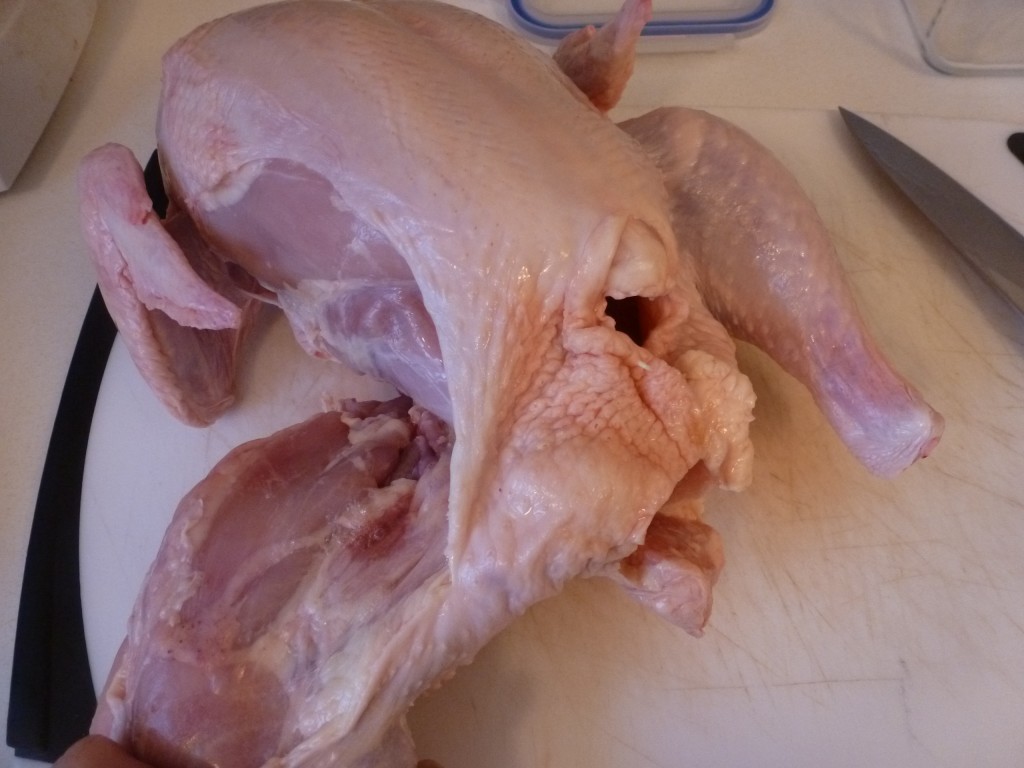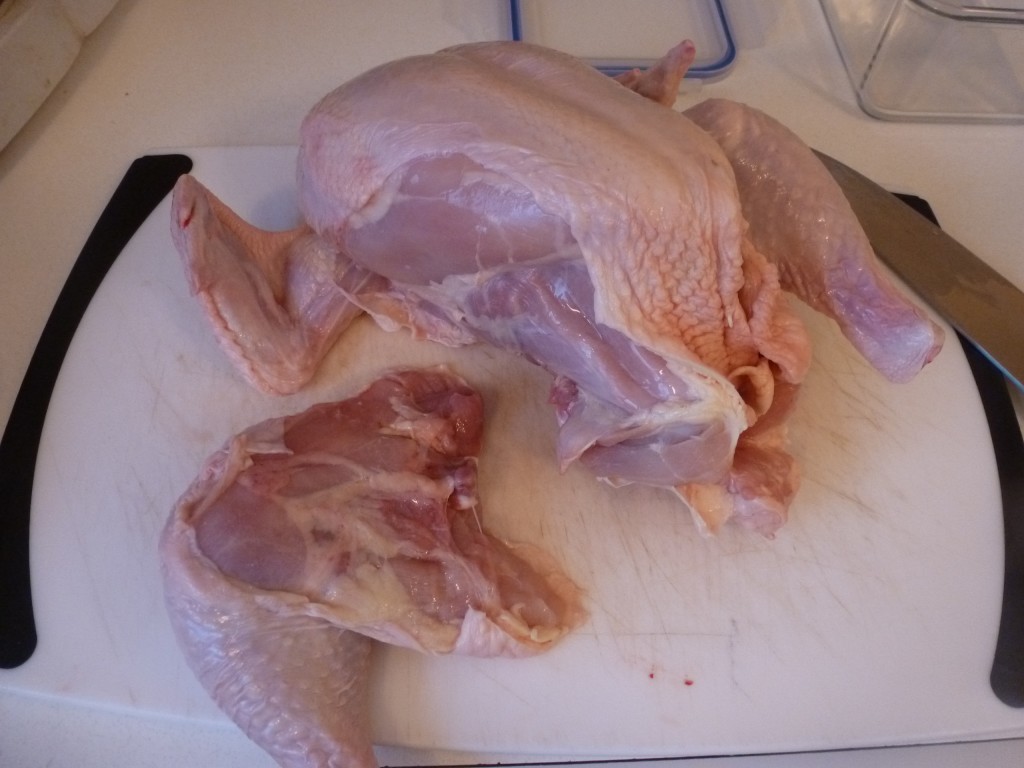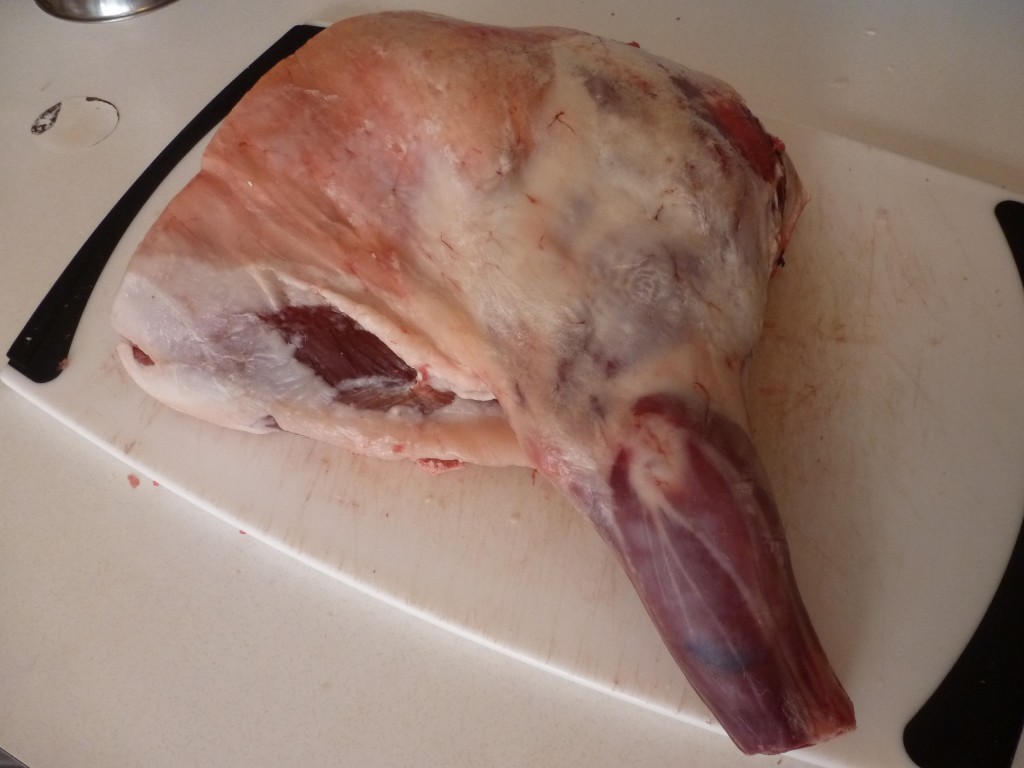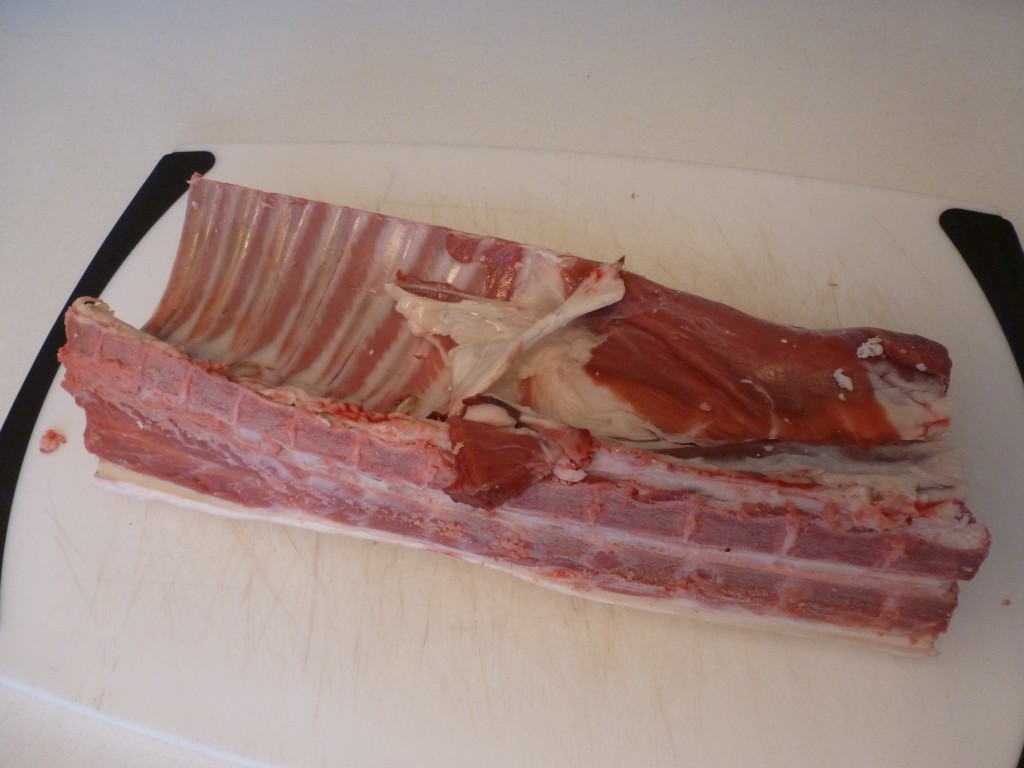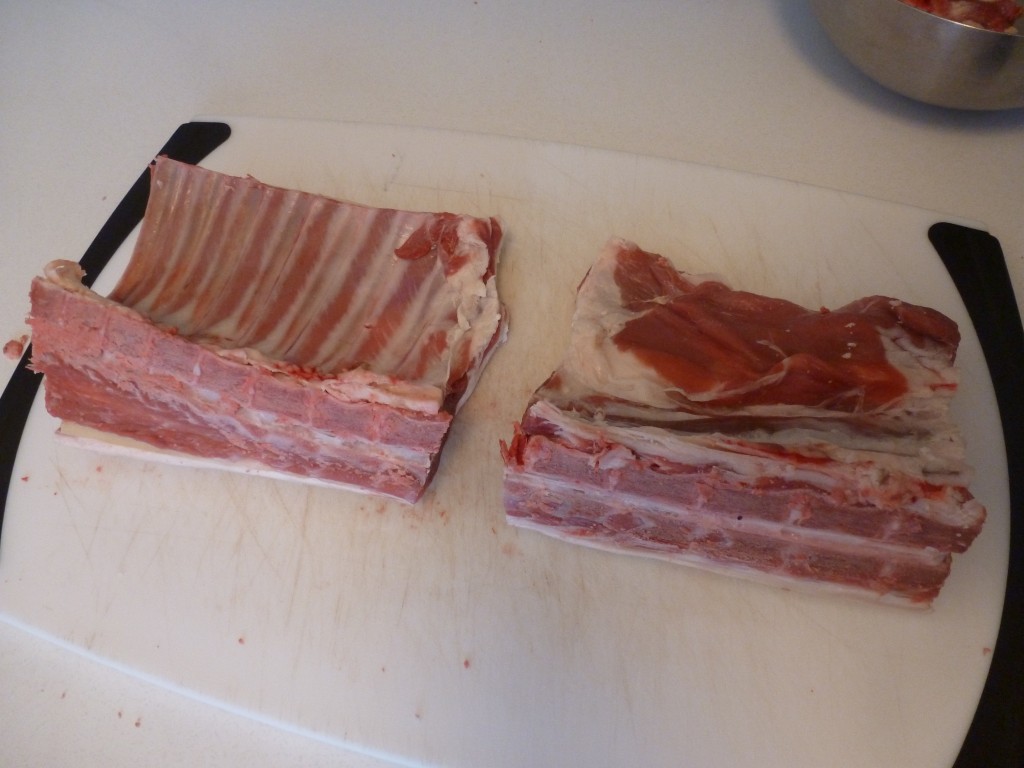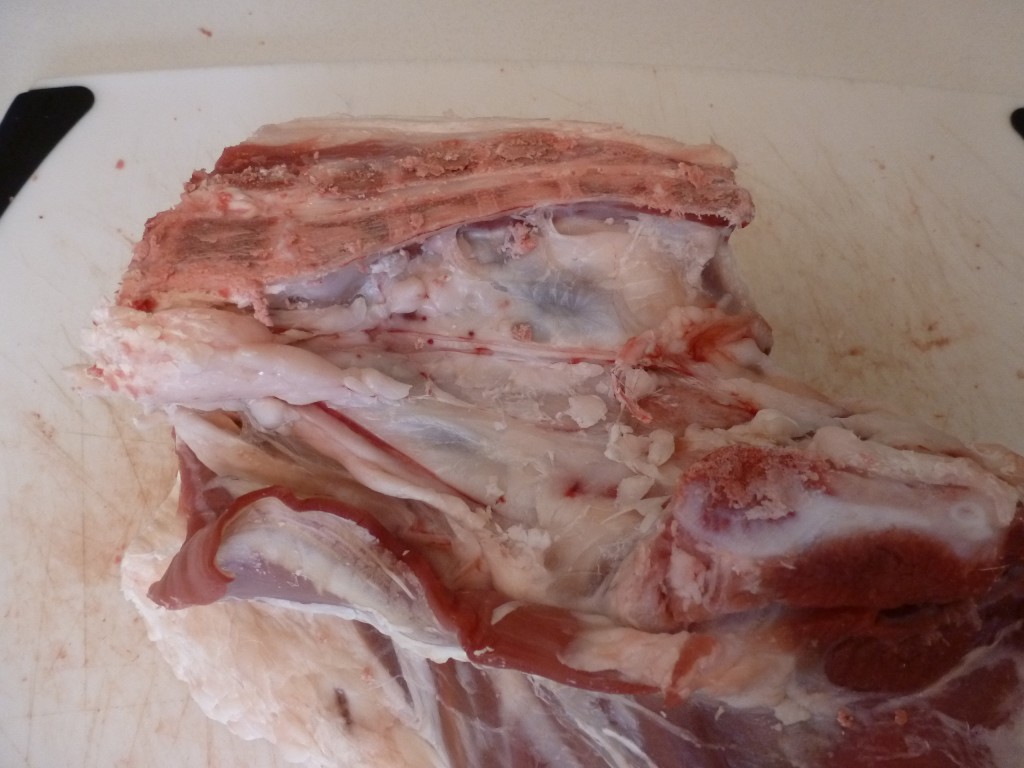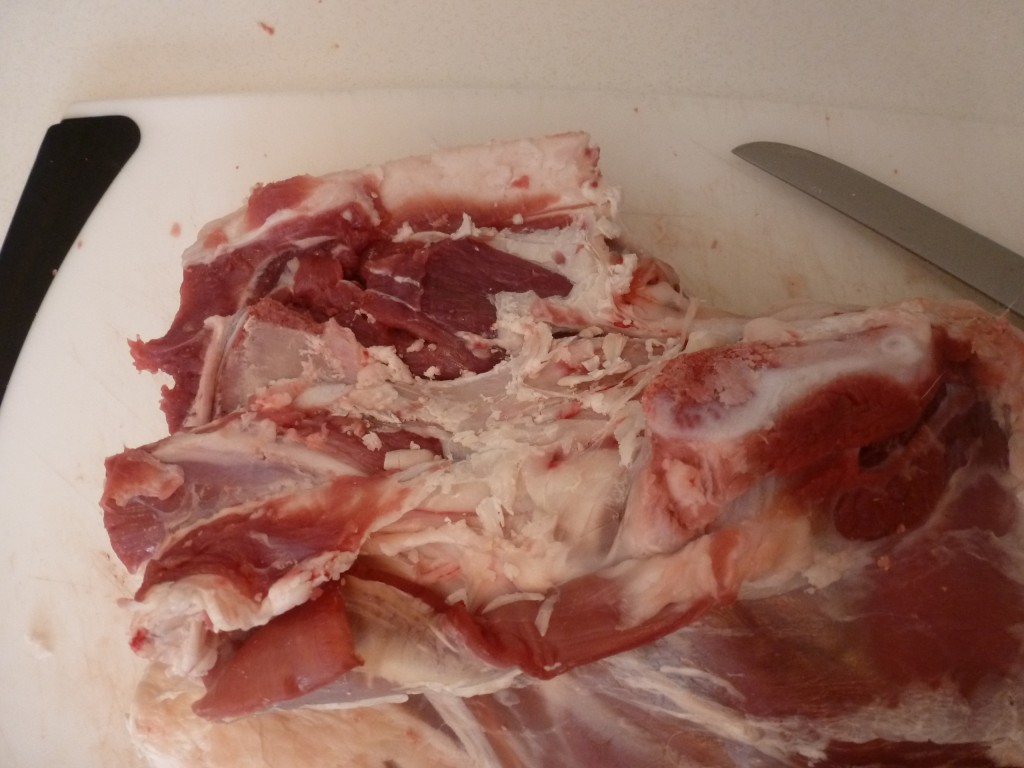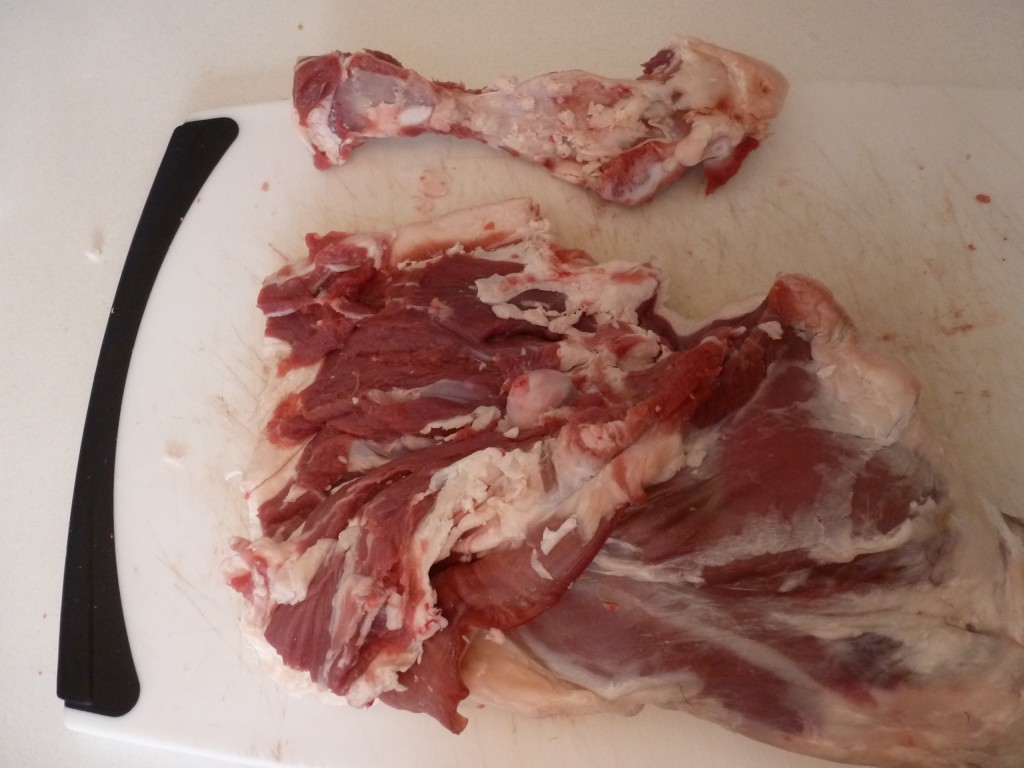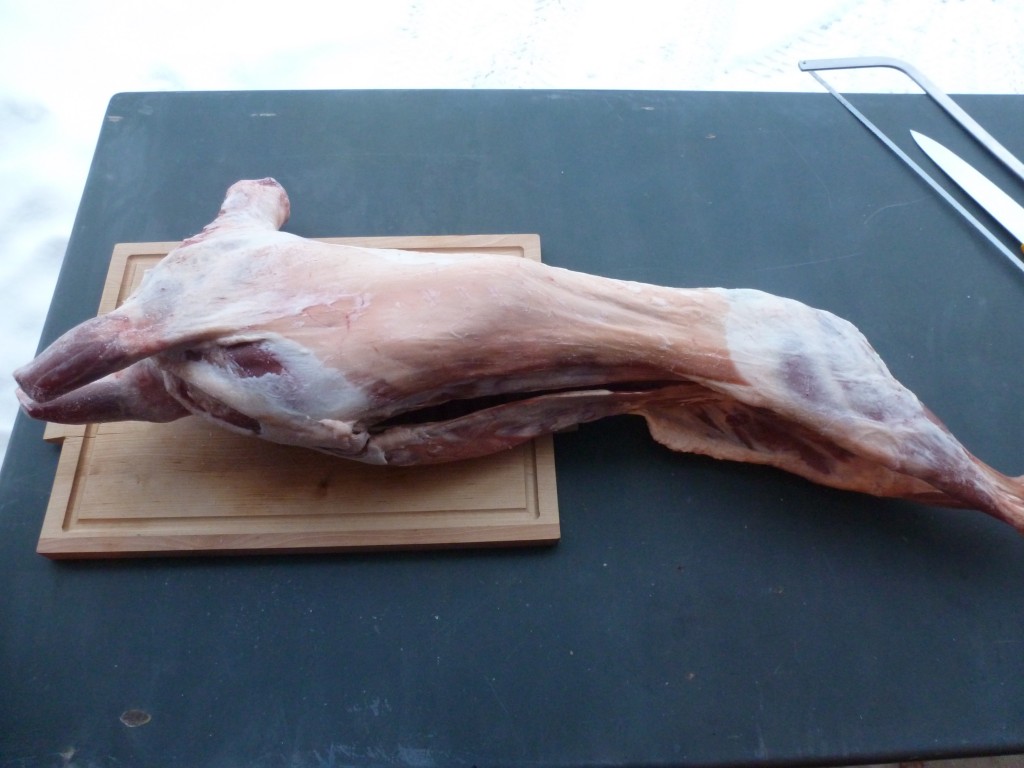Fried chicken should be eaten off the bone. Following is the classic way to break down a whole chicken into boney pieces that can be dredged and deep-fried. Traditionally there is a lot of cutting through the bones, which is fun but can leave little shards in the meat. I’ve cleaned up the method somewhat by separating at the joints where possible. Even so, I wouldn’t cut this way if I were feeding small children.
We start by removing the legs at the hip. Bend the leg backwards to expose the joint, then cut with a knife.
To separate the thigh and drumstick, bend the knee against it’s will until it snaps, then cut through the joint. These are the … Continue reading.
